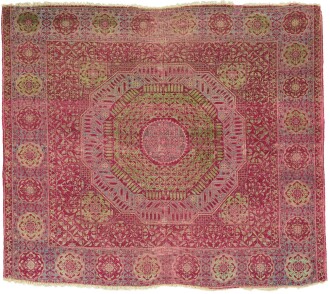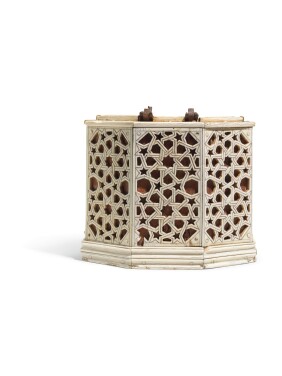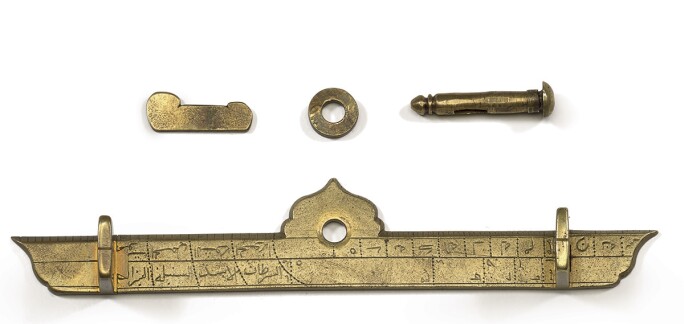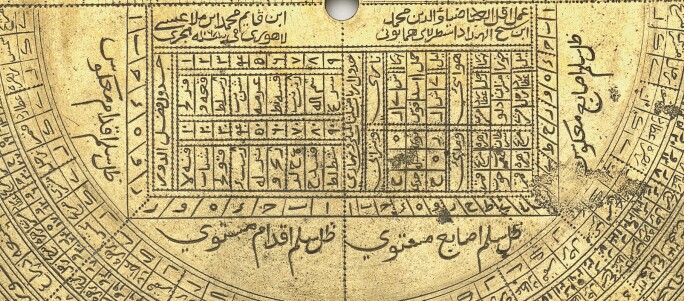O n 27 October, the sale of Arts of the Islamic World & India, including rugs and carpets, will include rare master works from the Islamic world, notably a leaf from the famed ninth century ‘Blue Qur’an’, renowned for its luxurious composition of deep blue dyed vellum and gold leaf, distinguishing it as one of the most opulent Qur’ans ever produced.
Carpets in the sale include the spectacular 'Bird' carpet, formerly in the collections of both Dr. Kurt Zander and Dr. Alfred Cassirer, attributed to Selendi, a town between Oushak, Kula and Ghiordes, circa 1575. The Hirth Mamluk carpet, made in the second half of the 15th century, probably in Cairo, and originally from the Schottenkirche (Scots Church) in Regensburg, also features as a highlight of the auction.
Featured Highlights

Scroll through the Gallery to Explore the Different Folios
Art and architecture of the Islamic world is often characterized by a love of complex geometrical designs. The extension and repetition of motifs which lead to the illusion of infinity are to be seen on a multitude of mediums, and range in size from the minute to the monumental through architecture. Usually deriving from the arts of the book, many of these motifs can be traced back to Qur'anic illumination. The works featured here celebrate both the mathematical knowledge of geometry and its application on a multitude of works of art.
Featured Lots
View Lot
ESTIMATE: 200,000 - 300,000 GBP
Click on the red dots to discover more

- RETE

The rete on this astrolabe has an unusual feature – a small circular arc below its centre, which resembles the hull of a boat with the vertical meridien like an upright mast, and indicates the horizon for one specific latitude. This type of horizon is called zawraqi in medieval scientific Arabic, meaning ‘shaped like a ship’. Astrolabes with such ‘ships’ are extremely rare.
- ALIDADE

Known as the ‘sight rule’, this is pinned to the back of the mater. It is used to observe the position of a particular star at night and to tell the time during the day. It is exceptional to find an original alidade, contemporaneous with the rest of the astrolabe’s components, as seen in the present example.
- MATER

This is the ‘body’ of the astrolabe and is elaborately engraved on the inner surface with the longitudes and latitudes of 150 named cities, arranged within concentric circles. The large number of listed cities is remarkable – the names include Mecca, Medina, Aden, Baghdad, Isfahan, Lahore, Delhi, Kashmir, Balkh, Samarkand, Jarmi in Ethiopia, and Peking.
- DORSUM

The dorsum bears an inscription which states that this astrolabe was made by the celebrated Mughal astrobalist and instrument maker Diya al-Din ibn Muhammad Qa’im ibn ‘Isa Illah-Dad in Lahore and is dated 1068 AH (1657 AD). Diya al-Din was a fourth-generation member of the most distinguished family of Mughal instrument makers. The workshop was founded in the mid-sixteenth century by his great grandfather Illah-Dad who was the Court Astronomer to the Mughal Emperor Humayun.

- PLATES

Our astrolabe has five plates. Four of these are for eight different latitudes. The fifth, intended for use with the zawraqi ‘ship’ on the rete, has an additional set of markings on one side specifically for Lahore. The other side of this remarkable plate is engraved as a celestial map (see illustration), showing the position of 23 stars. This highly unusual plate can be fixed within the mater in two opposing positions, allowing the astrolabe to be used without the rete. This ‘function’ is known on only one other astrolabe, a fourteenth century instrument by ‘Umar al-Kirmani in Iran, now in the Museum of Islamic Art in Doha.





























